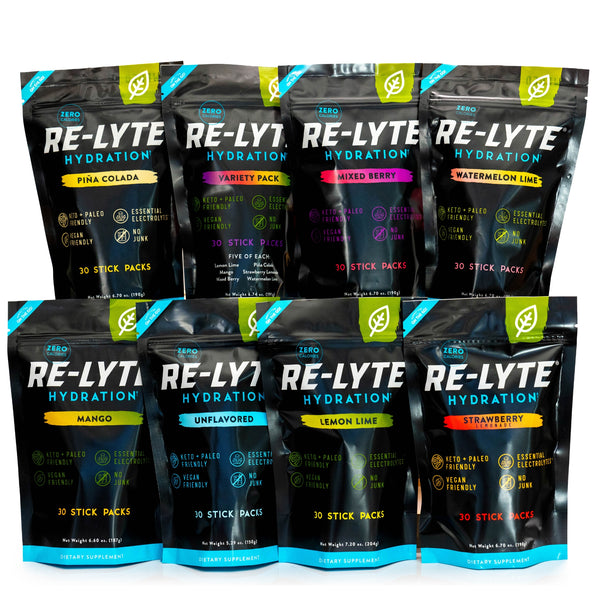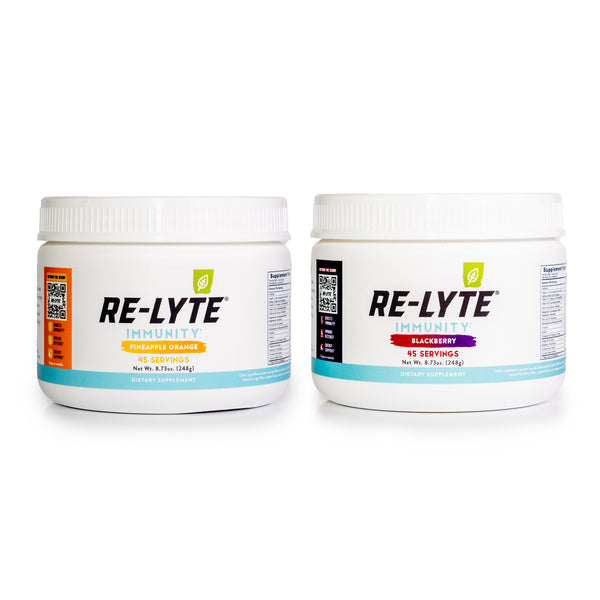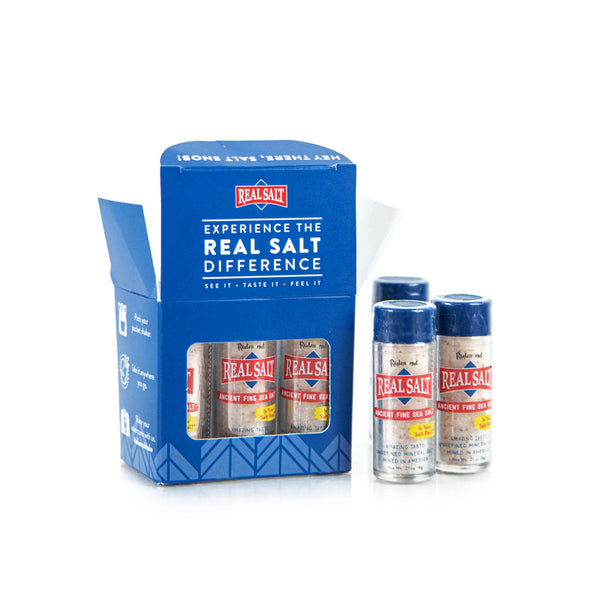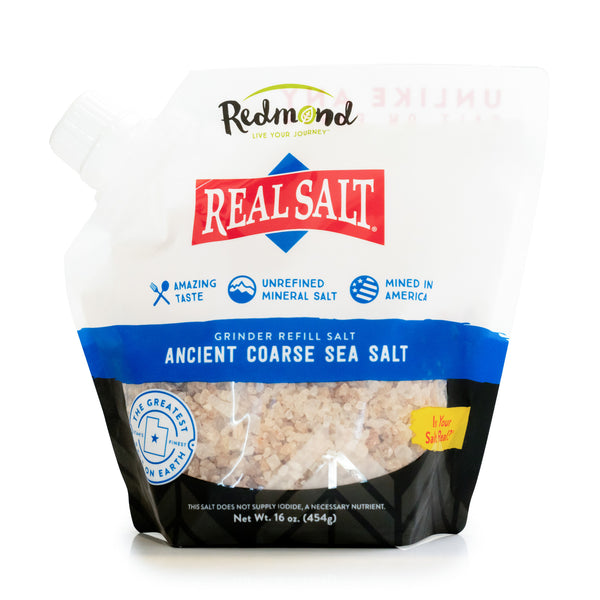Can Kids Drink Re-Lyte Hydration?

Article at a Glance:
- Hydration is essential for children’s energy, mood, and memory. Electrolytes like sodium, potassium, and magnesium play a vital role in maintaining their health.
- Children ages 1-3 need about 4 cups of hydrating liquids daily, while kids ages 4-8 require 5 cups, and those 8+ need 7-8 cups or more depending on activity level and climate.
- Re-Lyte Hydration is formulated for adults, but a reduced serving (40% of a scoop) provides kid-appropriate electrolyte levels. Although, you should always consult your pediatrician before use.
- Specifically created for kids aged 4+, Re-Lyte Kids offers balanced electrolytes, kid-friendly flavors (Grape, Pineapple, and Pink Lemonade), and vibrant colors from fruit and veggie extracts—all without added sugar.
If you rely on Re-Lyte Hydration to keep yourself healthy, hydrated, and feeling your best, you might be wondering: could your kiddos benefit from it too?
The micronutrient blend in Re-Lyte Hydration is formulated for adult bodies, so a full serving may be a bit much for children. That’s why we created Re-Lyte Kids—a version designed specifically to meet the hydration needs of little ones 4 and up. You can learn more about Re-Lyte Kids here.
But what if you already have Re-Lyte Hydration on hand and want to know if your littles can benefit from it?
We’ve got some tips on how you might use Re-Lyte Hydration to support your kids—after consulting their pediatrician, of course—so you can avoid sugary sports drinks and hydration products with unnecessary additives. Plus, we’re sharing general hydration guidelines for the little ones in your life. Let’s dive in!
A Quick Guide to Kids’ Hydration
Little kids play, run, and sweat like crazy, so it’s not surprising that proper hydration is super important to their overall well-being. Research shows that hydration impacts a child’s energy, mood, memory, and more.The American Academy of Pediatrics recommends that kids ages 1-3 get about 4 cups of water (or another hydrating liquid like milk) per day. It recommends kids ages 4-8 get about 5 cups, and kids ages 8 and older get 7-8 cups (or more) per day. Just like with adults, hydration for kids isn’t an exact science. These are general guidelines, but a child’s needs will vary based on their activity level, climate, or if they’re feeling under the weather.
What About Electrolytes?
Water is only one element of healthy hydration. Those oh-so-important minerals known as electrolytes are critical to your kids’ health and well-being too. Here are the current daily electrolyte guidelines for kids set by the Food and Nutrition Board of the National Academies of Sciences, Engineering, and Medicine:
Sodium
Ages 1–3: 800 mg
Ages 4–8: 1,000 mg
Ages 9–13: 1,200 mg
Ages 14–18: 1,500 mg
Chloride
Ages 1-3: 1,500 mg
Ages 4-8: 1,900 mg
Ages 9-13: 2,000 mg
Ages 14-18: 2,300 mg
Potassium
Ages 1–3: 2,000 mg
Ages 4–8: 2,300 mg
Ages 9–13: 2,300 mg (girls); 2,500 mg (boys)
Ages 14–18: 2,300 mg (girls); 3,000 mg (boys)
Calcium
Ages 1–3: 700 mg
Ages 4–8: 1,000 mg
Ages 9–13: 1,300 mg
Ages 14–18: 1,300 mg
Magnesium
Ages 1–3: 80 mg
Ages 4–8: 130 mg
Ages 9–13: 240 mg
Ages 14–18: 360 mg (girls); 410 mg (boys)
What’s the best way to make sure your kids get enough electrolytes? Food is a great source, especially foods like bananas, avocados, oranges, strawberries, melon, and watermelon. But as any parent knows, kids don’t always eat everything you want them to. And even if they do, there are times when they need a little extra electrolyte support. In those cases, you could turn to Re-Lyte Hydration with a few caveats.
How to Use Re-Lyte for Littles
While all the ingredients in Re-Lyte Hydration are safe for kids, a full serving was formulated with adults in mind. When we created Re-Lyte Kids, we consulted pediatricians and health experts to determine the ideal electrolyte balance for children aged 4 and up. This research also provides helpful guidance for parents on how to adapt Re-Lyte Hydration for their little ones.
With approval from a trusted pediatrician, you could give children aged 4 and older approximately 40% of a scoop of Re-Lyte Hydration. This reduced serving size keeps electrolyte levels within appropriate ranges for kids. Here’s what a 40% serving provides:
Sodium- 324 mg
Potassium- 160 mg
Chloride- 512 mg
Calcium- 24 mg
Magnesium- 20 mg
This smaller serving is similar to the electrolyte amounts found in Re-Lyte Kids. That said, Re-Lyte Kids offers additional benefits tailored specifically for children, which might make it worth exploring for the little ones in your life.
What Makes Re-Lyte Kids Unique
We teamed up with pediatricians and parents to create an electrolyte drink that’s perfectly balanced for kids’ needs and one they’ll be excited to drink. With less than half the sodium of Re-Lyte Hydration, it has a naturally sweeter taste to appeal to picky palates—without any added sugar. It’s lightly sweetened with stevia and comes in three delicious, kid-approved flavors: Grape, Pineapple, and Pink Lemonade.
To make it even more fun, we used fruit and veggie extracts to give each flavor a vibrant, kid-friendly color. Ready to learn more about Re-Lyte Kids? Check it out here.
Sources:
- Choose Water for Healthy Hydration—HealthyChildren.org.
- Children and Electrolytes: Everything You Need to Know—Verywell Family.
- Effects of hydration status on cognitive performance and mood—British Journal of Nutrition.
- Kids and sodium: Serious risks, alarming realities—Mayo Clinic Health System.
- Calcium: Fact Sheet for Consumers—National Institutes of Health.
- Magnesium: Fact Sheet for Health Professionals—National Institutes of Health.
- Potassium: Fact Sheet for Consumers—National Institutes of Health.
- Dietary intake of sodium by children: Why it matters—Paediatrics & Child Health.
- Chloride in diet—Mount Sinai.
Comments (2)

Hi, Elizabeth, thanks for your question. Because Real Salt is unprocessed, it does not contain added iodine. It does have some naturally occurring iodine, roughly 18-23 micrograms per ¼ teaspoon serving. ________________________________

Hey I’m wondering if I can give this to my 3 year old ? And if so how much? And also my 16 month old
Thanks,
Zach
———
Redmond Life replied:
Hi Zach, thanks for your question! Re-Lyte Hydration is made for adults, but many parents give it to kids in smaller servings. Check out this blog post for age-based guidance, and be sure to consult your pediatrician too! ________________________________












